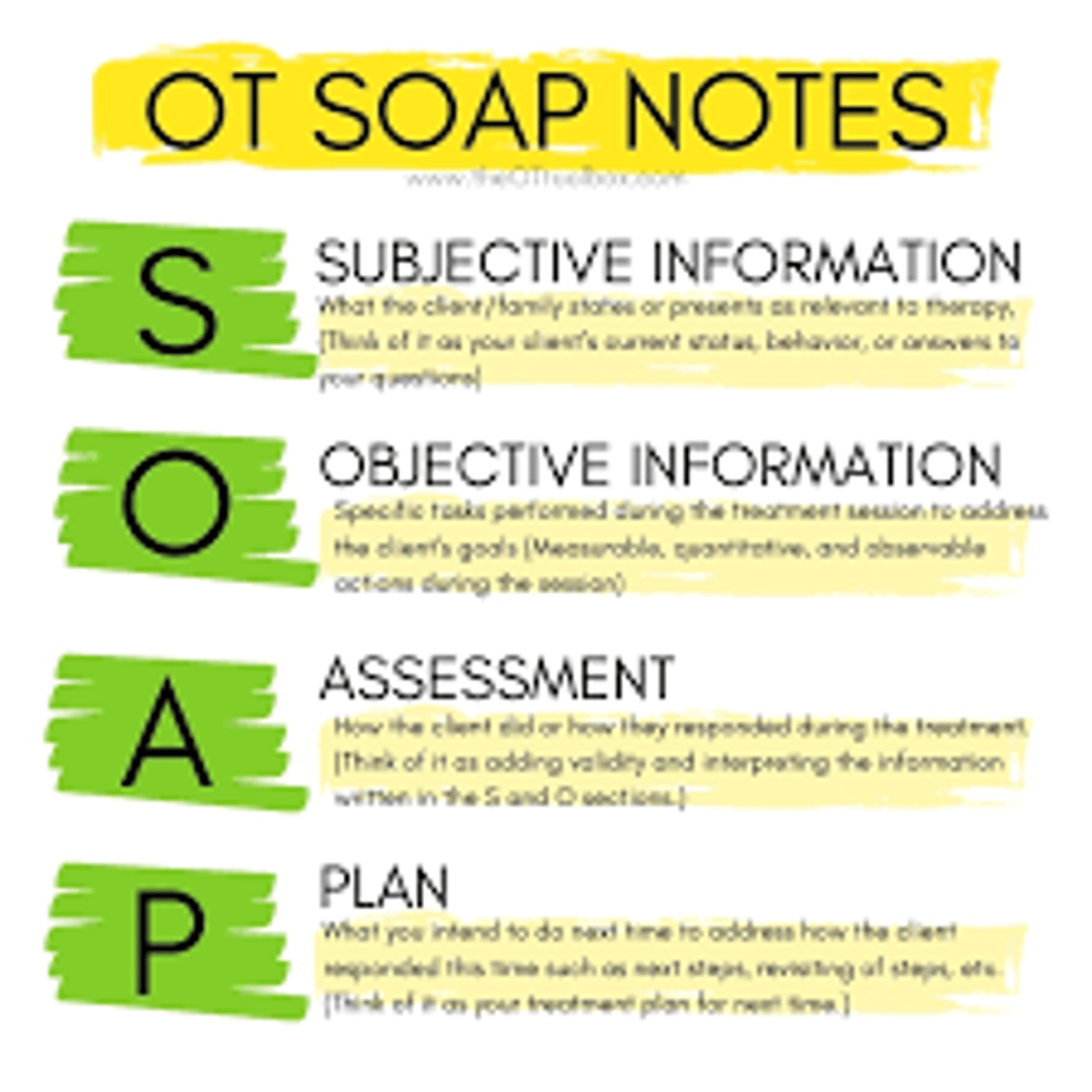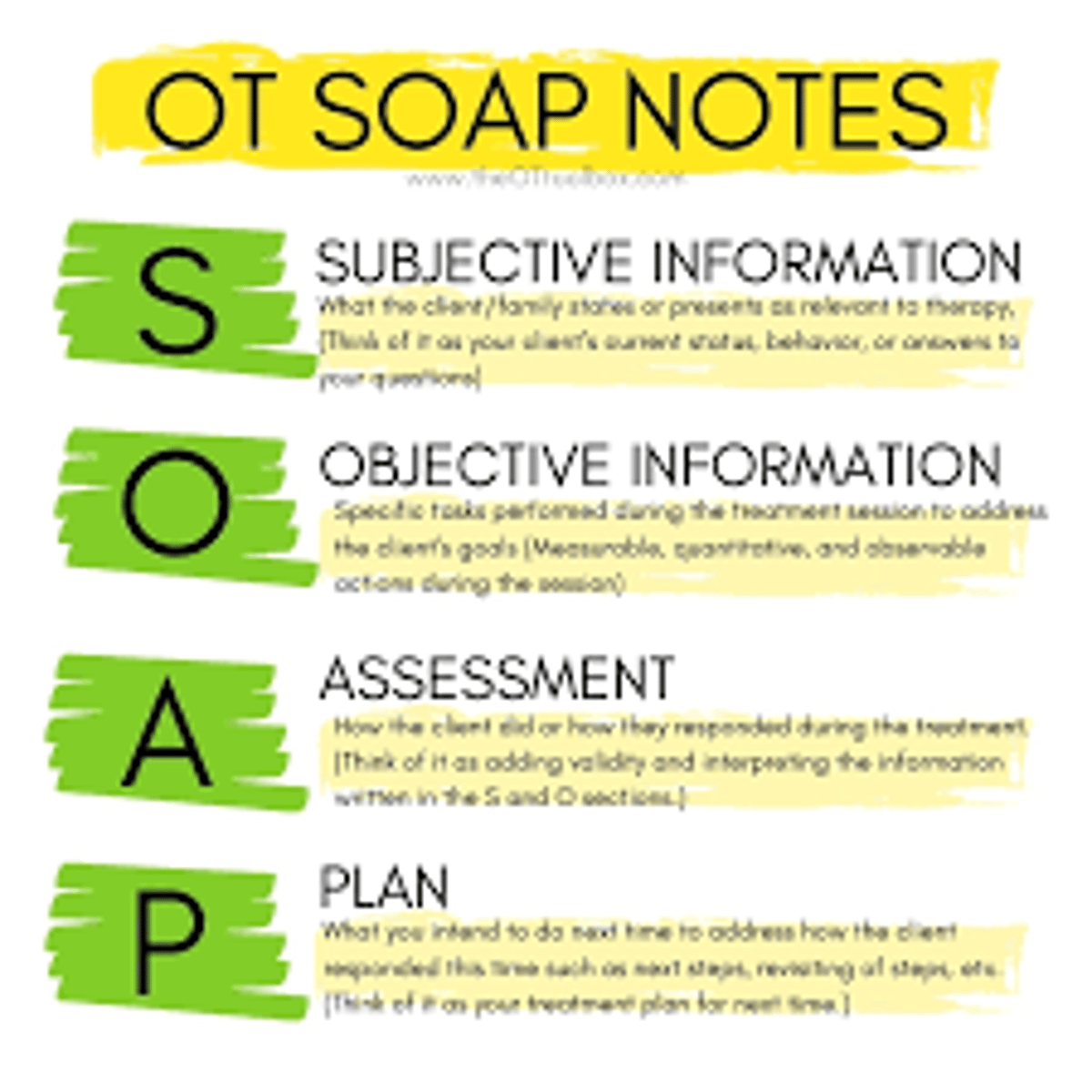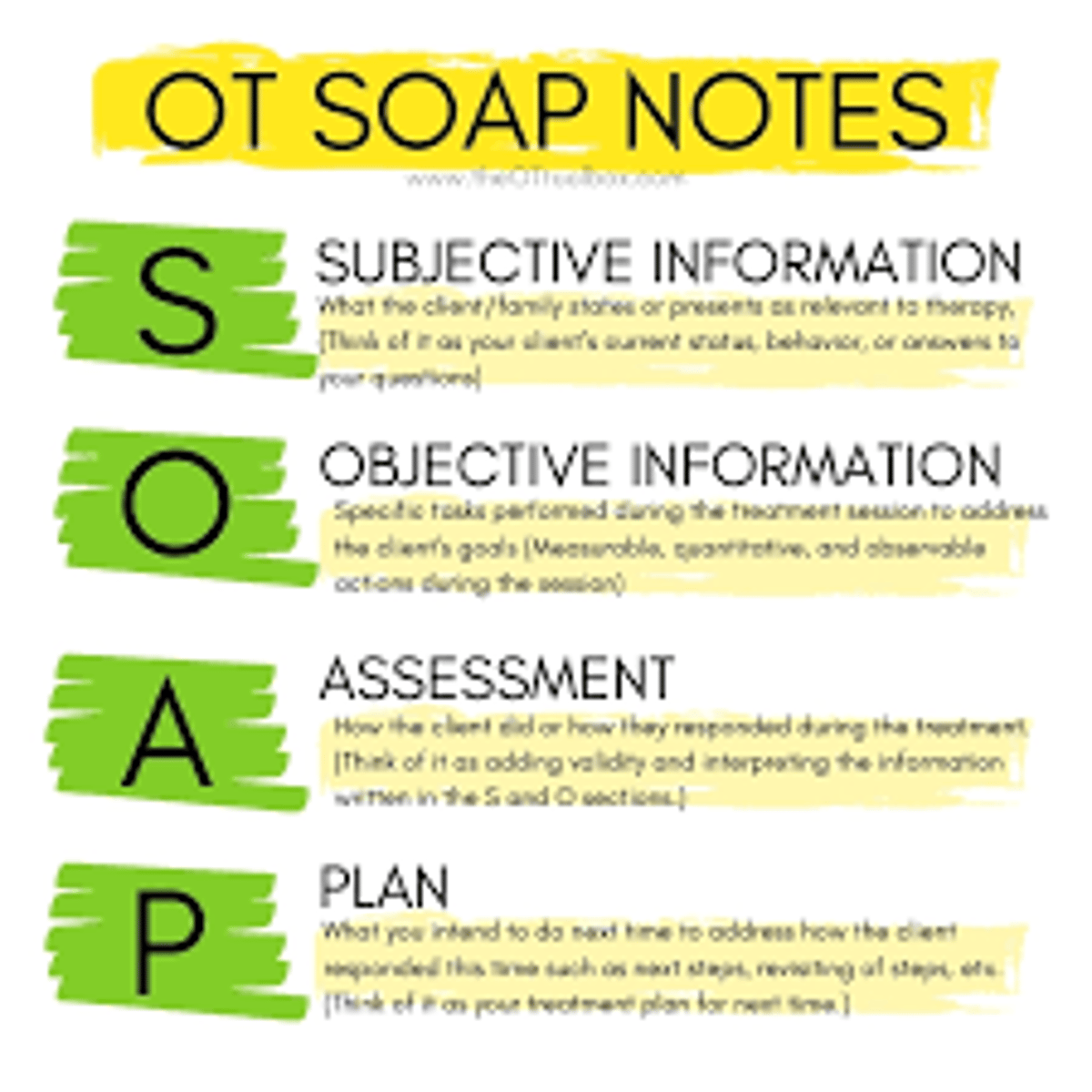Weeks 11-12: Documentation, Goals, Intervention Planning, Discharge
1/24
There's no tags or description
Looks like no tags are added yet.
Name | Mastery | Learn | Test | Matching | Spaced |
|---|
No study sessions yet.
25 Terms
narrative documentation
- Sequence of events in therapy encounter
- Written in free text format
- Always specific, concise, and clear
- Allows OT to tell the patient's story in each therapy encounter, but can be time-consuming, lengthy, unstructured and risks omitting important data
template documentation
- Outline all required and relevant information
- Items from drop-down menus
- Efficient and provides standardized records, but doesn't tell the whole story
acronym documentation
- Highly structured information recorded in the order of the acronym initials
- Helpful guide to structure narrative notes and documentation templates
- Used to set up reports, including evaluations, re-evaluations, progress notes, and discharge summaries
subjective (SOAP note)
- Client's perspective: what the client or family states and presents as relevant to therapy
- Not measurable
- Can include pain and occupational profile

objective (SOAP note)
specific tasks performed during the treatment session to address the client's goals (measurable, quantitative, and observable actions during treatment)

assessment (SOAP note)
analysis of client's progress, occupational limitations, and expected benefit from OT intervention; analyze, summarize, and prioritize data recorded in the "S" and "O"; justify 'why'

problem; progress; potential; continuationp
Things to be included in your assessment statement:
- (?) statements
- (?)
- (?)
- Justify (?) of OT services
plan (SOAP note)
- Should relate to information presented in "O" and "A" sections and should address your assessment of what the client would benefit from
- Informs readers of your priorities regarding intervention strategies
frequency; duration; purpose
Things to include in your plan statement:
- (?)
- (?)
- (?) of continued therapy and/or specific interventions and referrals if needed
measurable; observable; action-oriented
What are three attributes that your goals must have?
long term goals (LTG); problem; short term goal (STG)
Goals in an intervention plan are also called (?) or outcomes, and are usually discharge goals. For each (?) identified, you will have at least one LTG. For each LTG, you will have at least one (?) or objective.
specific
What does the S stand for in SMART goals?
measurable
What does the M stand for in SMART goals?
achievable
What does the A stand for in SMART goals?
realistic
What does the R stand for in SMART goals?
timely
What does the T stand for in SMART goals?
client (COAST goal)
- Goals should be written in terms of what the CLIENT will do and NOT what the therapist will do
- Therapist's actions documented under intervention strategies
- Use an action verb (ex: "Client will perform...")
occupation (COAST goal)
- What occupation are you observing the client doing?
- Must relate to problem statements included in "A" section
- Ex: "Client will perform a 3-step cooking process..."
assist level (COAST goal)
- What level of independence is the client expected to demonstrate?
- Physical and verbal cues that will be required for the client to complete the activity
- Be careful not to mix level of independence
- Ex: "Client will perform a 3-step cooking process with 2 or fewer verbal cues for sequencing and safety..."
specific conditions (COAST goal)
- Any other conditions (location, adaptive equipment, modified technique)
- Assist (A) and Specific Conditions (S) together make your goal statement more measurable
- Ex: "Client will perform a 3-step cooking process with 2 or fewer verbal cues for sequencing and safety from w/c level in rehab kitchen."
timeline (COAST goal)
- Time frame within the goal is expected to be accomplished
- Often an expected discharge timeframe
- Realistic for your setting in which you are working
- Ex: "Client will perform a 3-step cooking process with 2 or fewer verbal cues for sequencing and safety from w/c level in rehab kitchen within 5 weeks”
intervention plan
a plan that will guide actions taken and that is developed in collaboration with the client
create or promote, establish or restore, maintain, modify, prevent
What are the five categories of intervention approaches?
therapeutic use of occupations and activities, preparatory methods and preparatory tasks, education and training, advocacy, group interventions
What are the types of OT interventions?
discharge summary
- Client information
- Summary of intervention process
- Recommendations